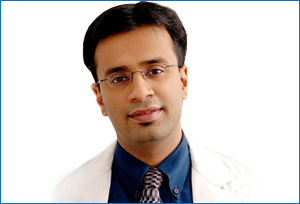What is canalicular trauma?
Any sudden physical injury that damages the lacrimal system of the eyes is known as canalicular trauma. The lacrimal ducts which are also known as the lacrimal canal or the lacrimal canaliculi are situated in the medial aspect of the eyelids. This part of the eyelids does not contain any tarsal substructure. Though many types of trauma injuries can damage the lacrimal system of the eyes, the most common cause of the canalicular lacerations is dog bites. Canalicular lacerations can be treated in the best manner by surgeons who specialize in the lacrimal system.
Direct or indirect injuries may cause canalicular trauma. Damage to the canalicular system may not cause scarring but also may cause watering of eyes. High intensity trauma which is penetrating in nature may cause canalicular damage. Statistically, canalicular trauma injuries are caused more by dog bites rather than other causes. Indirect trauma injuries may be caused by a direct or a diffused blow to the face like in the case of a punch to the face or an accident.
Canalicular injuries mostly affect young people. It is often seen that children younger than the age of 4 years are more prone to dog bites. The dog breed which has been shown to cause most ocular injuries is the Pitbull. People in their middle age are observed to be least likely to get canalicular injuries. But same is not true with older people. The chances and the risk of an elderly person falling is more which makes them prone to canalicular injury. Because of the nature of the canalicular injuries it is observed that males are more prone to suffer from canalicular lacerations as compared to females. Direct blow to the eyelids and impact to cheeks may cause canalicular lacerations. Trauma during the birth of a child may result in canalicular trauma while it may also occur due to some other surgery.
Diagnosis
Physical examination is the first step for diagnosing any type of canalicular lacerations. Sometime probing of the canalicular system may be done. For assessing the condition of the canalicular system in young children, probing along with dilation is important. Laceration of the medial wall is a big indicator of the damage in the lacrimal system.
Any trauma to the upper face may cause canalicular lacerations. It is very important for the surgeon to know the accurate history of the injury of the patient as there may be foreign bodies causing wounds in the eyes. If the surgeon suspects the possibility of the presence of presence of foreign bodies in the eye, he may order a CT scan of the ocular area. Before the treatment is started, any allergies or any relevant medical history of the patient should be communicated to the surgeon. If the patient has a prior history of any naso- lacrimal surgery, it is crucial to inform the surgeon about the same.
Once the condition of the patient is stabilized and it has been established that the globe is completely intact, the surgeon can proceed onto the repair of the eyelids and any canalicular injury that may be present.
The most important diagnostic tool in for the imaging of canalicular trauma is a CT scan and in case orbital fractures are suspected, a CT orbit may be done. A MRI is generally not preferred as it not only takes longer but may present some contraindications as well. Orbital fractures, if any, should be repaired before addressing trauma of the canalicular system. If the globe of the eye has sustained any injury it is repaired before addressing any other ocular issue. Canalicular lacerations are best handled by surgeon who specializes in oculoplasty. To restore the integrity of the anatomy of the eye, the margins of the eyelid and the canaliculus are repaired completely.
If the globe of the eye is intact and there is no suspicion of any foreign objects in the eyes, the canalicular trauma can be handled well even after hours of the injury.
There are many surgical approaches which can be chosen by the surgeon for handling canalicular lacerations. Intravenous anesthesia is generally given in most extreme cases and the patients need not be even sedated for the canalicular repair. Children may need to be lightly sedated for the treatment.
The canalicular repair is followed up till the time the wound completely heals. The sutures that need to be removed after the surgery are removed within a fortnight. The surgical repair of canalicular lacerations is important. Rare complications may include loss of vision and poor healing of the scars. Both of these complications are highly unlikely. Prognosis of canalicular trauma surgery is very good and most patients achieve normal functionality. Very rarely, there can be a need of a follow up surgery for canalicular trauma.


